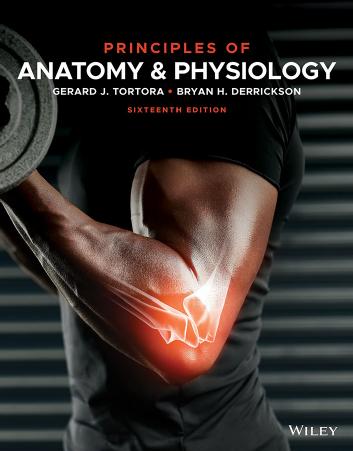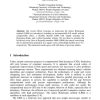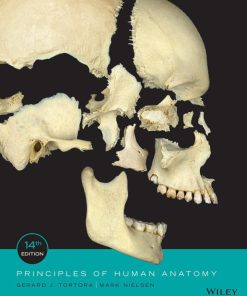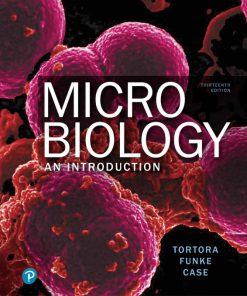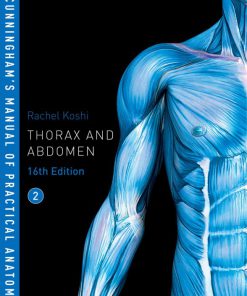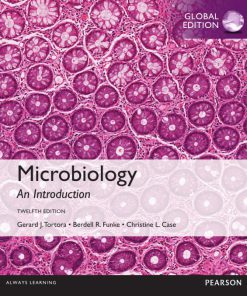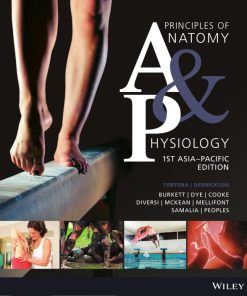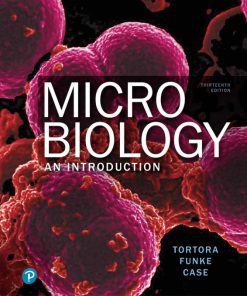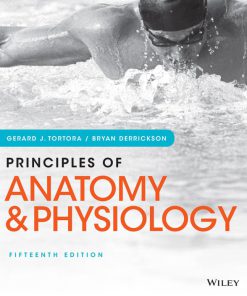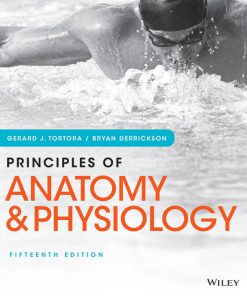CHAPTER 19: The Cardiovascular System: The Blood
Blood and Homeostasis
19.1 Functions and Properties of Blood
19.2 Formation of Blood Cells
19.3 Red Blood Cells
19.4 White Blood Cells
19.5 Platelets
19.6 Stem Cell Transplants from Bone Marrow and Cord Blood
19.7 Hemostasis
19.8 Blood Groups and Blood Types
Disorders: Homeostatic Imbalances
Chapter Review
Critical Thinking Questions
Answers to Figure Questions
CHAPTER 20: The Cardiovascular System: The Heart
The Heart and Homeostasis
20.1 Anatomy of the Heart
20.2 Heart Valves and Circulation of Blood
20.3 Cardiac Muscle Tissue and the Cardiac Conduction System
20.4 The Cardiac Cycle
20.5 Cardiac Output
20.6 Exercise and the Heart
20.7 Help for Failing Hearts
20.8 Development of the Heart
Disorders: Homeostatic Imbalances
Chapter Review
Critical Thinking Questions
Answers to Figure Questions
CHAPTER 21: The Cardiovascular System: Blood Vessels and Hemodynamics
Blood Vessels, Hemodynamics, and Homeostasis
21.1 Structure and Function of Blood Vessels
21.2 Capillary Exchange
21.3 Hemodynamics: Factors Affecting Blood Flow
21.4 Control of Blood Pressure and Blood Flow
21.5 Checking Circulation
21.6 Shock and Homeostasis
21.7 Circulatory Routes: Systemic Circulation
21.8 The Aorta and Its Branches
21.9 Ascending Aorta
21.10 The Aortic Arch
21.11 Thoracic Aorta
21.12 Abdominal Aorta
21.13 Arteries of the Pelvis and Lower Limbs
21.14 Veins of the Systemic Circulation
21.15 Veins of the Head and Neck
21.16 Veins of the Upper Limbs
21.17 Veins of the Thorax
21.18 Veins of the Abdomen and Pelvis
21.19 Veins of the Lower Limbs
21.20 Circulatory Routes: The Hepatic Portal Circulation
21.21 Circulatory Routes: The Pulmonary Circulation
21.22 Circulatory Routes: The Fetal Circulation
21.23 Development of Blood Vessels and Blood
21.24 Aging and the Cardiovascular System
Disorders: Homeostatic Imbalances
Focus on Homeostasis
Chapter Review
Critical Thinking Questions
Answers to Figure Questions
CHAPTER 22: The Lymphoid (Lymphatic) System and Immunity
The Lymphoid System, Disease Resistance, and Homeostasis
22.1 The Concept of Immunity
22.2 Overview of the Lymphoid System
22.3 Lymphatic Vessels and Lymph Circulation
22.4 Lymphoid Organs and Tissues
22.5 Development of Lymphoid Tissues
22.6 Innate Immunity
22.7 Adaptive Immunity
22.8 Cell-Mediated Immunity
22.9 Antibody-Mediated Immunity
22.10 Self-Recognition and Self-Tolerance
22.11 Stress and Immunity
22.12 Aging and the Lymphoid System
Disorders: Homeostatic Imbalances
Focus on Homeostasis
Chapter Review
Critical Thinking Questions
Answers to Figure Questions
CHAPTER 23: The Respiratory System
23.1 Overview of the Respiratory System
23.2 The Upper Respiratory System
23.3 The Lower Respiratory System
23.4 Pulmonary Ventilation
23.5 Lung Volumes and Capacities
23.6 Exchange of Oxygen and Carbon Dioxide
23.7 Transport of Oxygen and Carbon Dioxide
23.8 Control of Breathing
23.9 Exercise and the Respiratory System
23.10 Development of the Respiratory System
23.11 Aging and the Respiratory System
Disorders: Homeostatic Imbalances
Focus on Homeostasis
Chapter Review
Critical Thinking Questions
Answers to Figure Questions
CHAPTER 24: The Digestive System
24.1 Overview of the Digestive System
24.2 Layers of the Digestive Canal
24.3 Neural Innervation of the Digestive Canal
24.4 Peritoneum
24.5 Mouth
24.6 Pharynx
24.7 Esophagus
24.8 Deglutition
24.9 Stomach
24.10 Pancreas
24.11 Liver and Gallbladder
24.12 Small Intestine
24.13 Large Intestine
24.14 Phases of Digestion
24.15 Development of the Digestive System
24.16 Aging and the Digestive System
Disorders: Homeostatic Imbalances
Focus on Homeostasis
Chapter Review
Critical Thinking Questions
Answers to Figure Questions
CHAPTER 25: Metabolism and Nutrition
Metabolism, Nutrition, and Homeostasis
25.1 Metabolic Reactions
25.2 Energy Transfer
25.3 Carbohydrate Metabolism
25.4 Lipid Metabolism
25.5 Protein Metabolism
25.6 Key Molecules at Metabolic Crossroads
25.7 Metabolic Adaptations
25.8 Energy Balance
25.9 Regulation of Body Temperature
25.10 Nutrition
Disorders: Homeostatic Imbalances
Chapter Review
Critical Thinking Questions
Answers to Figure Questions
CHAPTER 26: The Urinary System
26.1 Overview of the Urinary System
26.2 Anatomy of the Kidneys
26.3 The Nephron
26.4 Overview of Renal Physiology
26.5 Glomerular Filtration
26.6 Tubular Reabsorption and Tubular Secretion
26.7 Production of Dilute and Concentrated Urine
26.8 Evaluation of Kidney Function
26.9 Urine Transportation, Storage, and Elimination
26.10 Waste Management in Other Body Systems
26.11 Development of the Urinary System
26.12 Aging and the Urinary System
Disorders: Homeostatic Imbalances
Focus on Homeostasis
Chapter Review
Critical Thinking Questions
Answers to Figure Questions
CHAPTER 27: Fluid, Electrolyte, and Acid–Base Homeostasis
Fluid, Electrolyte, and Acid–Base Homeostasis
27.1 Fluid Compartments and Fluid Homeostasis
27.2 Electrolytes in Body Fluids
27.3 Acid–Base Balance
27.4 Aging and Fluid, Electrolyte, and Acid–Base Homeostasis
Chapter Review
Critical Thinking Questions
Answers to Figure Questions
CHAPTER 28: The Genital (Reproductive) Systems
The Genital Systems and Homeostasis
28.1 Male Genital (Reproductive) System
28.2 Female Genital (Reproductive) System
28.3 The Female Reproductive Cycle
28.4 The Human Sexual Response
28.5 Birth Control Methods and Abortion
28.6 Development of the Genital Systems
28.7 Aging and the Genital Systems
Disorders: Homeostatic Imbalances
Chapter Review
Critical Thinking Questions
Answers to Figure Questions
CHAPTER 29: Development and Inheritance
Development, Inheritance, and Homeostasis
29.1 Overview of Development
29.2 The First Two Weeks of the Embryonic Period
29.3 The Remaining Weeks of the Embryonic Period
29.4 Fetal Period
29.5 Teratogens
29.6 Prenatal Diagnostic Tests
29.7 Maternal Changes During Pregnancy
29.8 Exercise and Pregnancy
29.9 Labor
29.10 Adjustments of the Infant at Birth
29.11 The Physiology of Lactation
29.12 Inheritance

